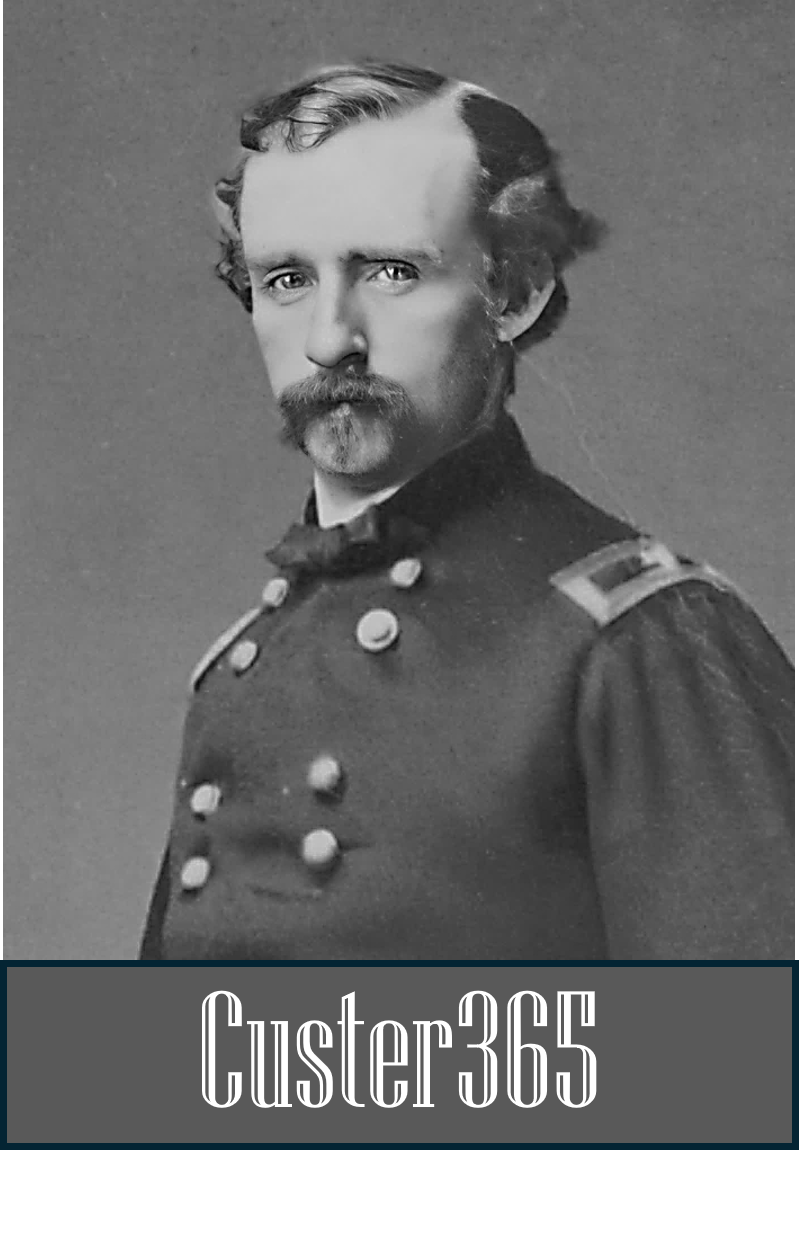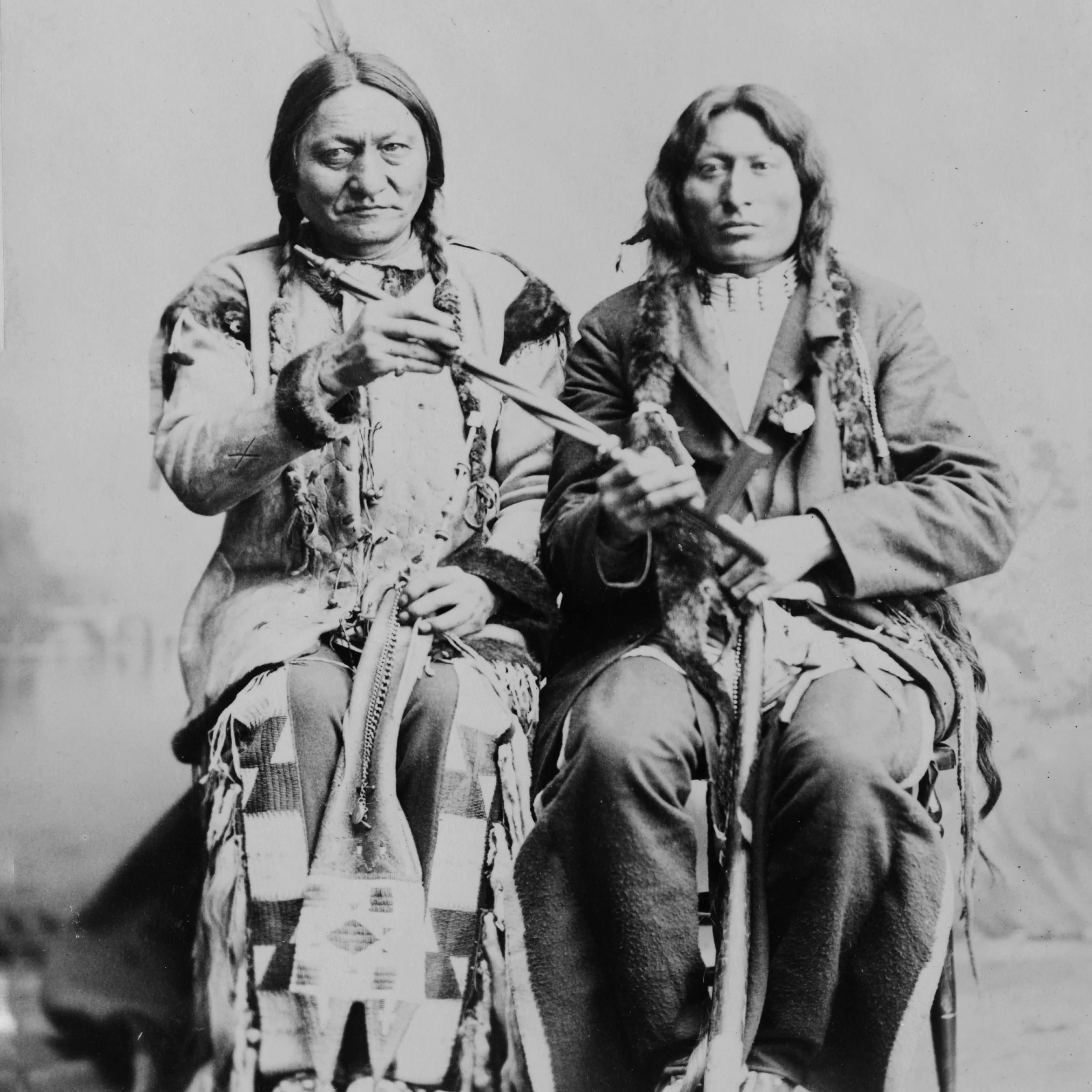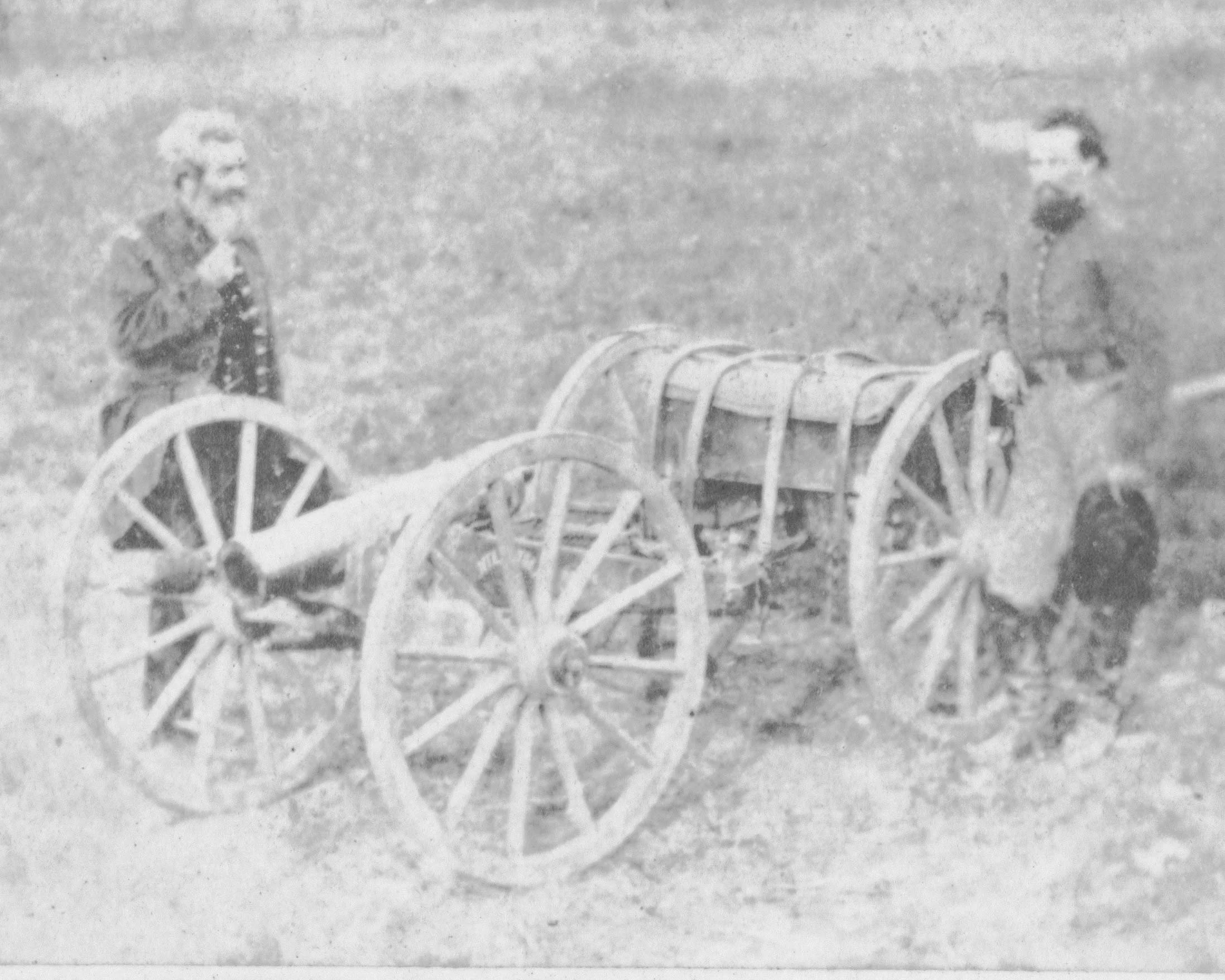JULY 28: Sitting Bull Learns About Cannons
Sioux Chief Sitting Bull (left) and his nephew One Bull. (Credit: Library of Congress)
On July 28, 1864, Brigadier General Alfred Sully led two brigades – approximately 2,200 men from Iowa, Minnesota, and Dakota – to the Killdeer Mountains, about 20 miles southeast of today’s Theodore Roosevelt National Park North Unit in North Dakota. There, a village of several bands of Sioux, about 8,000 people all together, were encamped. Sully dismounted his troops into formation and advanced on the village.
According to the National Park Service, “Warriors led by Sitting Bull, Gall, and Inkpaduta sparred with Sully’s formation to little effect as the army advanced toward the village of 1,600 lodges. For warriors like Sitting Bull, it was the first battle in which they experienced cannons and a large number of guns.
“Fanny Kelly (a Sioux captive), who observed the battle from among the Sioux women and children hurriedly retreating from Sully’s troops, recalled, ‘General Sully’s soldiers appeared in close proximity, and I could see them charging on the Indians, who, according to their habits of warfare, skulked behind trees, sending their bullets and arrows vigorously forward into the enemy’s ranks.’
A mountain howitzer. (Credit; Library of Congress)
“Lt. David Kingsbury recorded his perspective of the battle from the other side of the field. ‘The Indians made repeated charges at the full speed of their ponies, keeping up meanwhile their unearthly yelling. In these charges many of them were killed, while no casualties occurred on our side.’”
Sully pounded the village with artillery fire from two mountain howitzers until sundown. The village was abandoned.
The next day, Sully’s troops destroyed large stores of food, tipis, and supplies that had been left behind. Lt. Kingsbury reported, “The amount of supplies, including pemmican, jerked buffalo meat, dried berries, and buffalo robes, that was burned could not be estimated.”
The battle was a continuation of hostilities that began in Minnesota in 1862-63, when members of several bands of Sioux, including the Sisseton, Wahpeton, and Santee, attacked numerous targets near the Minnesota River in south-central Minnesota. In the fighting, more than 600 Minnesotan civilians and army personnel were killed. Partly in response to these attacks known as the Minnesota Sioux Uprising, and despite the Civil War raging elsewhere in the United States, the U.S. Army retaliated against the Sioux in 1863 and 1864. Sully led the U.S. Army in its campaign into the western portion of the Dakota Territory in 1864.
As the Army continued to respond to the uprisings, the Sioux were driven further west.



